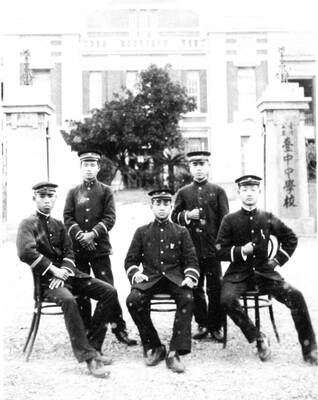Visitors at the Dickinson Homestead, Emily Dickinson's erstwhile residence and now a museum in Amherst, Massachusetts, will scarcely notice an inconspicuous Chinese book that is popping up in the showcases of its exhibition room. But the book is making big waves among Taiwan's literati. Ostensibly a Chinese translation of selected poems by Dickinson, the book is now hailed as the first serious exploration of her poetry to ever come out in the Chinese language.
Translation of poetry is generally seen as a hopeless endeavor because no single rendering can fully convey the nuances, images and symbolism of poetic language. That was why Robert Frost never approved any translation of his works. Nor can we be certain what Emily Dickinson would say -- were she alive today -- of having her poetry translated. But what makes this book stand out are the sumptuous interpretations that follows each work.
The book contains a selection of 50 poems in English and Chinese, including some of her best-known pieces like "Because I could not stop for Death" and "A narrow Fellow in the Grass." Each translation is followed by a one-page interpretation, which unravels for the Chinese reader Dickinson's hidden themes and often enigmatic language that perplex even fairly sophisticated native English readers.
Beyond the usual researched presentations of the social and historical backdrop of Dickinson's life, the interpretations exude a warm intimacy with the poems, in which the interpreters say they have long steeped themselves. At a recent press conference, George Lytle (
Dorothea Tung (
The book is illustrated with photos taken by Tung during a trip to the poet's hometown in 1998. The pictures cover the Dickinson Homestead (where she lived from 1855, when she was 25, until her death in 1886), the landscape around Amherst and, perhaps the most stunning of all, the tombstone that tells us Emily has been "called back."
Some translations of Dickinson's poems have been published in China. Literary heavyweights like Yu Kuang-chung (
The renderings in this new book are bound to generate the usual, endless debates in academia. But the pleasure for most readers lies in the explanations that unveil -- for the first time in Chinese -- the vast and complex landscape of the poet-hermit's inner world. Apart from Chinese students of American literature, the book will be of interest to foreigners studying Chinese and aiming to probe into the field of translation.

In the March 9 edition of the Taipei Times a piece by Ninon Godefroy ran with the headine “The quiet, gentle rhythm of Taiwan.” It started with the line “Taiwan is a small, humble place. There is no Eiffel Tower, no pyramids — no singular attraction that draws the world’s attention.” I laughed out loud at that. This was out of no disrespect for the author or the piece, which made some interesting analogies and good points about how both Din Tai Fung’s and Taiwan Semiconductor Manufacturing Co’s (TSMC, 台積電) meticulous attention to detail and quality are not quite up to

April 28 to May 4 During the Japanese colonial era, a city’s “first” high school typically served Japanese students, while Taiwanese attended the “second” high school. Only in Taichung was this reversed. That’s because when Taichung First High School opened its doors on May 1, 1915 to serve Taiwanese students who were previously barred from secondary education, it was the only high school in town. Former principal Hideo Azukisawa threatened to quit when the government in 1922 attempted to transfer the “first” designation to a new local high school for Japanese students, leading to this unusual situation. Prior to the Taichung First

Chinese Nationalist Party (KMT) Chairman Eric Chu (朱立倫) hatched a bold plan to charge forward and seize the initiative when he held a protest in front of the Taipei City Prosecutors’ Office. Though risky, because illegal, its success would help tackle at least six problems facing both himself and the KMT. What he did not see coming was Taipei Mayor Chiang Wan-an (將萬安) tripping him up out of the gate. In spite of Chu being the most consequential and successful KMT chairman since the early 2010s — arguably saving the party from financial ruin and restoring its electoral viability —

The Ministry of Education last month proposed a nationwide ban on mobile devices in schools, aiming to curb concerns over student phone addiction. Under the revised regulation, which will take effect in August, teachers and schools will be required to collect mobile devices — including phones, laptops and wearables devices — for safekeeping during school hours, unless they are being used for educational purposes. For Chang Fong-ching (張鳳琴), the ban will have a positive impact. “It’s a good move,” says the professor in the department of